if a current of 12mA exists in the 5k(Ω) resistor, find the currents in the other three resistors.what is the potential difference between the points A and B?
 Solution in Gujrati
Solution in Gujrati
i1×20=i2×10
⇒i1i2=1020=12
i1=4mA,i2=8mA
Current∈20KΩregister=4mA
Current∈10KΩregister=8mA
Current∈100KΩregister=12mA
V=V1+V2+V3
=5KΩ×12mA+10KΩ
×8mA+100KΩ×12mA
=60+80+1200vo<s.
= 1340 volts.
Topper's Solved these Questions
- BOOK - HC VERMACHAPTER - ELECTRIC CURRENT IN CONDUCTORSEXERCISE - Objective 29videos
ELECTRIC CURRENT IN CONDUCTORS
- BOOK - HC VERMACHAPTER - DISPERSION AND SPECTRAEXERCISE - Exercises11videos
DISPERSION AND SPECTRA
- BOOK - HC VERMACHAPTER - ELECTRIC CURRENT THROUGH GASESEXERCISE - Exercises23videos
ELECTRIC CURRENT THROUGH GASES
Similar Questions
Electrons are emitted by a hot filament and are accelerated by an electric field as shown in figure .The two stops at the left ensure that the electron beam has a uniform cross-section.
 03:14View Solution
03:14View SolutionA flint glass prism and a crown glass prism are to be combined in such a way that the deviation of the mean ray is zero. The refractive index of flint and crown glasses for the mean ray are 1.620 and 1.518 respectively. If the refracting angle of the flint prism is 6.0∘, what would be the refracting angle of the crown prism ?
04:45View SolutionA discharge tube contains helium at a low pressure. A large potential difference is applied across the tube. Consider a helium atom that has just been ionized due to the detachment of an atomic electron. Find the ratio of the distance travelled by the free electron to that by the positive ion in a short time dt after the ionization.
12:02View SolutionA exists in the 5k(Ω) resistor, find the currents in the other three resistors.what is the potential difference between the points A and B?
 03:09View Solution
03:09View SolutionFind potential difference between points A and B of the network shown in fig. and distribution of given main current through different resistors.
04:33View Solution(a) Find the current in 5Ω and voltage across 5Ω.
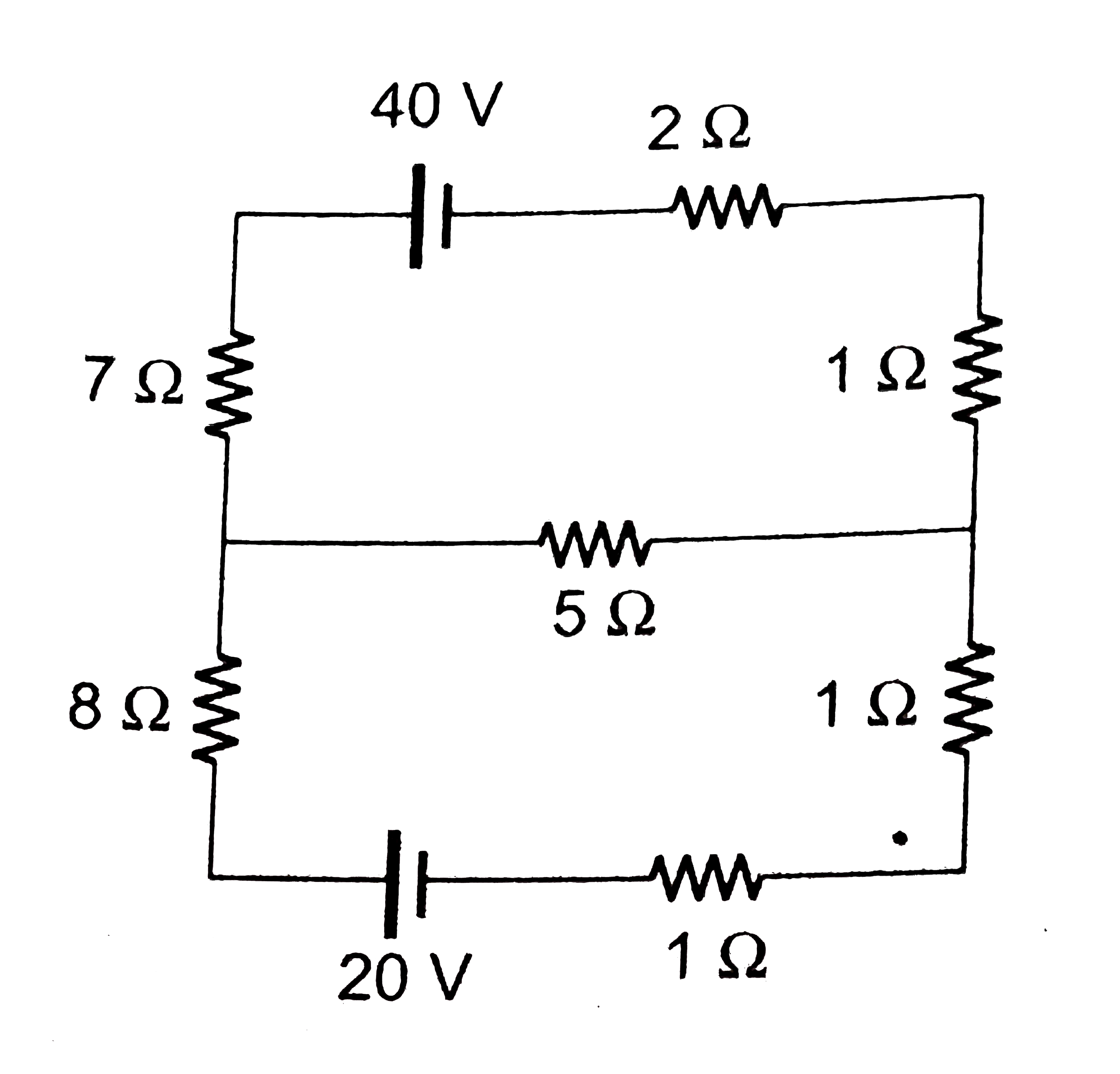
(b) Find the current in the 15Ω resistor.
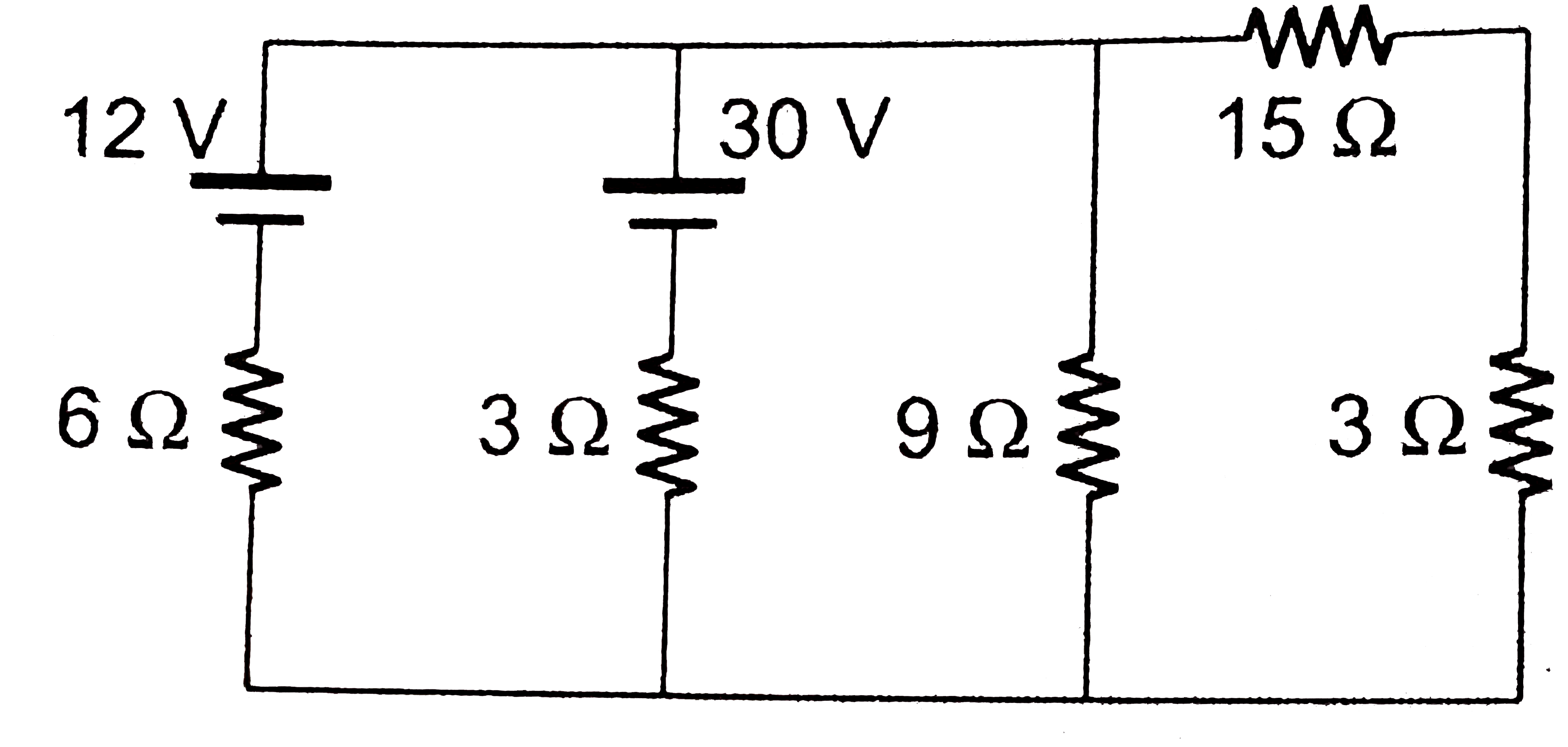
( c) Calculate the potential difference between A and B.
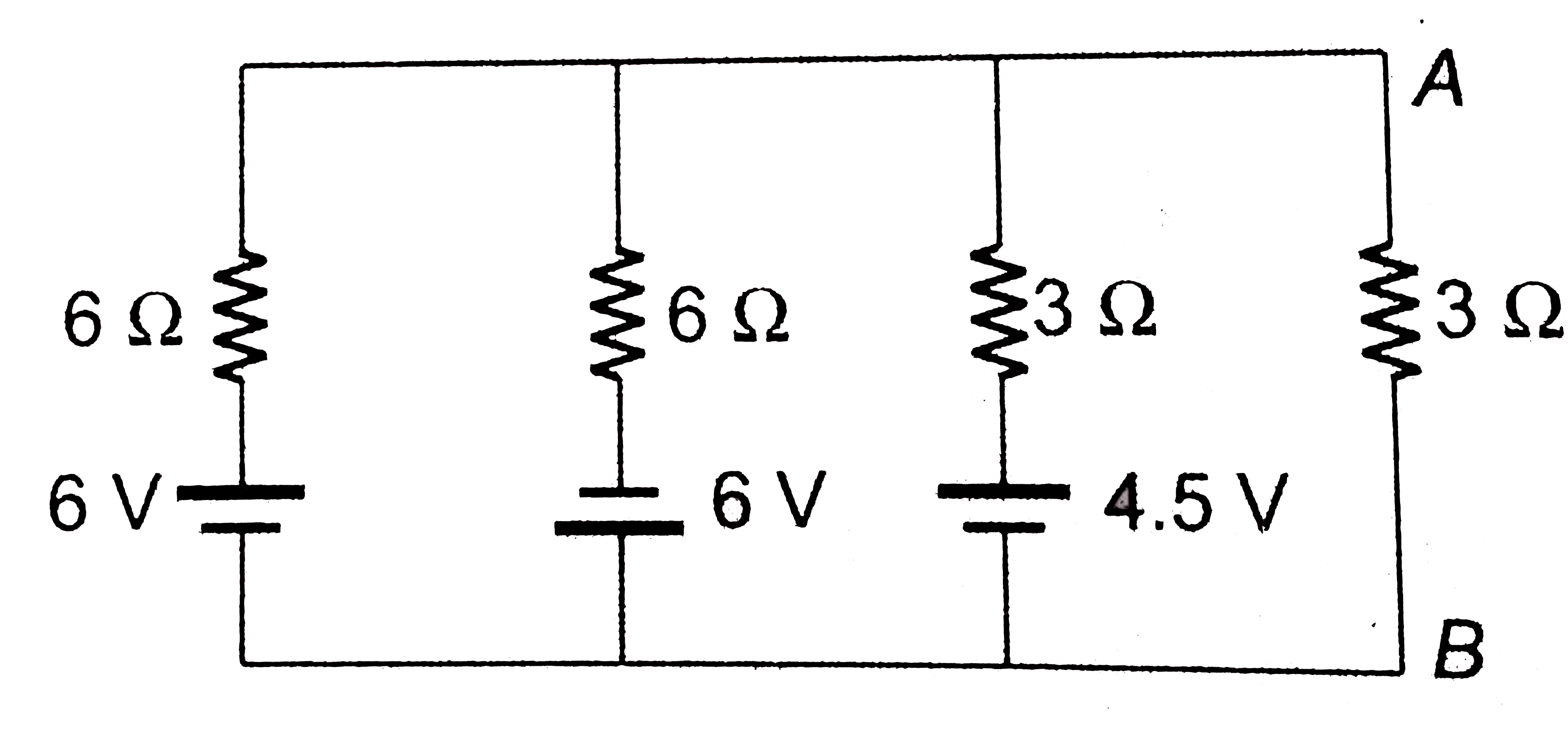
(d) Find the current flowing in 10Ω and the potential difference between A and B .
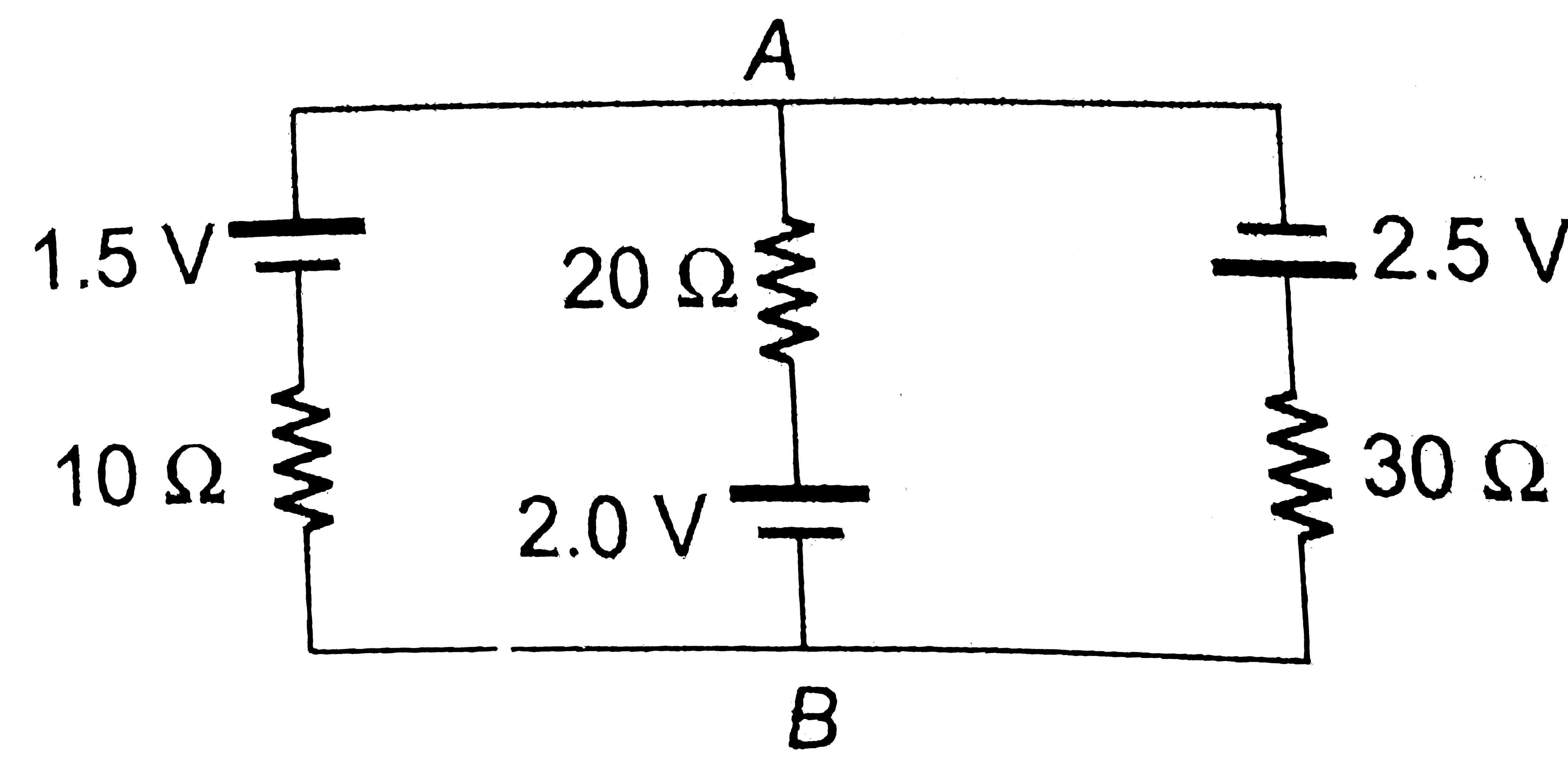 .04:33View Solution
.04:33View SolutionFind the potential difference between the points a and b. If the points a and b are joined by a resistance of 5 Omega , calculate the current through this resistance.
05:20View SolutionThree resistors of 1 Omega , 2 Omega and 4Omega are connected in parallel in a circuit. If a 1Omega resistor draws a current of 1A, find the current through the other two resistors.
01:32View SolutionThree resistors of 1Ω, 2 Ωand4Ω are connected in parallel in a circuit. If a 1Ω resistor draws a current of 1A, find the current through the other two resistors.
04:02View SolutionIn Fig. 27-63, R_1=100 Omega, R_2= 50 Omega, and the ideal batteries have emfs, epsi_(1)=6.0 V, epsi_(2)= 10 V, and epsi_(3) =4.0 V. Find (a) the current in resistor 1, (b) the current in resistor 2, and (c) the potential difference between points a and b.
05:29View SolutionThree resistors of 3Ω,6Ωand9Ω are connected in parallel. A potential difference of 18 V is maintained across the combination. Find the current in each resistor.
04:22View SolutionThree resistors of 10 Ω, 15 Ω and 20 Ω are connected in series in a circuit. If the potential drop across the 15 Ω resistor is 3 V, find the current in the circuit and potential drop across the 10 Ω resistor.
04:22View Solution100A exists in the 5k(Ω) resistor, find the currents in the other three resistors .what is the potential difference between the points A and B?
 07:47View Solution
07:47View SolutionFind potential difference between points A and B of the network shown in Fig. and distribution of given main current through different resistors.
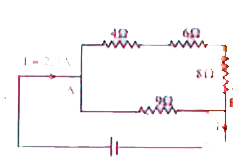 View Solution
View SolutionFind potential difference between points A and B of the network shown in Fig. and distribution of given main current through different resistors.
 01:44View Solution
01:44View SolutionFind the potential difference between the points a and b. If the points a and b are joined by a resistance of 5Ω, calculate the current through this resistance.
 02:14View Solution
02:14View Solution

